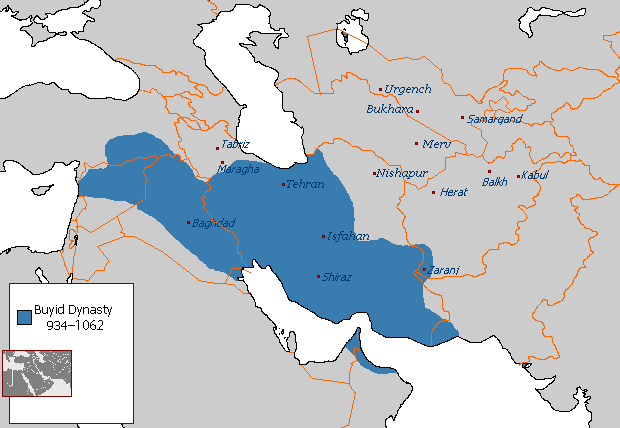Buyid Dynasty (819–999)
The Buyid Dynasty (934–1062 CE) was a Shia Persian dynasty that played a significant role in the political and cultural history of Iran during the 10th and early 11th centuries. The Buyids ruled over large parts of Iran, including Fars, Khuzestan, and Iraq, and had a significant influence on the Abbasid Caliphate.


Establishment of the Buyid Dynasty
- The Buyid dynasty was founded by Ali ibn Buya, a military leader of Persian origin. The family initially served as officers in the Samanid and Ziyarid administrations.
- The rise of the Buyids began when Ali ibn Buya and his brothers seized control of Fars (southern Iran) and later expanded their influence into Iraq and other regions.
- The Buyid rulers officially established their rule over Baghdad in 945 CE, marking the beginning of their power.

Influence over the Abbasid Caliphate
- Although the Buyids never officially held the title of Caliph, they exercised significant power over the Abbasid Caliphate in Baghdad, making them the de facto rulers of the Islamic world for several decades.
- The Abbasid caliphs remained in power but were relegated to a more symbolic role as the Buyid rulers held military and political authority.
- The Buyids played a crucial role in the Shia-Sunni relations of the time, as the Buyid rulers were Shiite, while the Abbasid Caliphs were Sunni. The Buyids helped elevate the position of Shia Islam, especially in Iraq and parts of Iran.

Cultural and Economic Achievements
- The Buyid dynasty is known for its patronage of the arts, architecture, and literature. Many important works of Persian literature and scholarship were supported during this period.
- The Buyids also contributed to the development of Persian as a cultural and administrative language. Persian, alongside Arabic, became increasingly important in the courts and administration.
- Under the Buyids, Baghdad and other cities flourished culturally, with notable advancements in science, philosophy, and medicine.

Decline of the Buyid Dynasty
- The decline of the Buyid dynasty began in the 11th century due to internal conflicts, external invasions, and weakening central power.
- The Seljuk Turks played a key role in the downfall of the Buyids. By the mid-11th century, the Seljuks had emerged as a dominant power in the region, and they gradually supplanted the Buyids.
- By 1062 CE, the Buyid dynasty had collapsed, and their territories were absorbed by the Seljuk Empire.

Legacy of the Buyid Dynasty
- The Buyid dynasty played a significant role in the political and cultural landscape of Iran and Iraq during its time.
- The dynasty is credited with strengthening the Shia presence in the region and promoting Persian culture during a time of Arab dominance.
- Despite their eventual fall, the Buyid dynasty’s influence on Shia Islam and Persian culture left a lasting legacy in the region.
